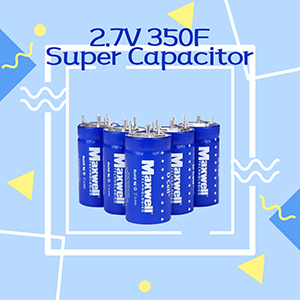YTF CAPACITOR & RESISTOR BRAND SUPPLIER
 YTF
YTF  2023-11-23
2023-11-23
Supercapacitors (ultracapacitors), also known as electrochemical capacitors (ElectrochemicalCapacitors), electric double-layer capacitors (ElectricalDoule-LayerCapacitor), gold capacitors, farad capacitors, were developed in the 1970s and 1980s through the use of polarized electrolyte to An electrochemical element that stores energy. It is different from the traditional chemical power supply.
According to the different energy storage mechanisms, they can be divided into the following two categories:
· Electric double layer capacitor: It is generated by the confrontation of charges caused by the directional arrangement of electrons or ions at the electrode / solution interface. For an electrode / solution system, an electric double layer is formed at the interface between the electron conductive electrode and the ion conductive electrolyte solution. When an electric field is applied to the two electrodes, the anions and cations in the solution migrate to the positive and negative electrodes, respectively, and an electric double layer is formed on the electrode surface. After the electric field is removed, the positive and negative charges on the electrodes are in opposite phases to the ions in the solution. The electric double layer is stabilized by attraction, and a relatively stable potential difference is generated between the positive and negative electrodes. At this time, for a certain electrode, a certain amount of heterogeneous ion charge equal to the charge on the electrode will be generated within a certain distance (dispersion layer) to keep it electrically neutral; when the two electrodes are connected to an external circuit, the The charge migrates to generate a current in the external circuit. The ions in the solution migrate to the solution and become electrically neutral. This is the charging and discharging principle of the electric double layer capacitor.

· · Faraday quasi-capacitance: Its theoretical model was first proposed by Conway. It is a two-dimensional or quasi-two-dimensional space on the electrode surface and near surface or in the bulk phase. The electroactive material is underpotentially deposited and a highly reversible chemical absorption Desorption and redox reactions produce capacitance related to electrode charging potential. For a Faraday quasi-capacitor, the process of storing charges includes not only storage on the electric double layer, but also redox reactions between electrolyte ions and electrode active materials. When ions in the electrolyte (such as H +, OH-, K + or Li +) diffuse from the solution to the electrode / solution interface under the action of an applied electric field, they will enter the electrode surface by the redox reaction at the interface. In the bulk phase, a large amount of charge is stored in the electrode. During discharge, these ions entering the oxide will be returned to the electrolyte again through the reverse reaction of the above redox reaction, and the stored charge is released through the external circuit. This is the charging and discharging mechanism of the Faraday quasi-capacitor.